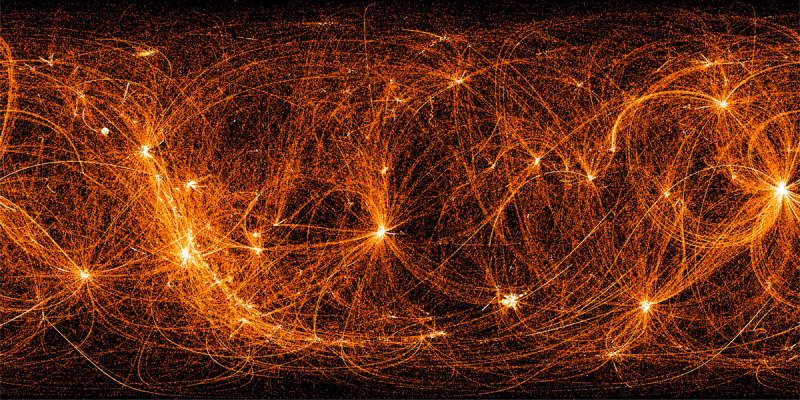Explanation: A payload on board the International Space Station, the Neutron star Interior Composition Explorer (NICER) twists and turns to track cosmic sources of X-rays as the station orbits planet Earth every 93 minutes. During orbit nighttime, its X-ray detectors remain on. So as NICER slews from target to target bright arcs and loops are traced across this all-sky map made from 22 months of NICER data. The arcs tend to converge on prominent bright spots, pulsars in the X-ray sky that NICER regularly targets and monitors. The pulsars are spinning neutron stars that emit clock-like pulses of X-rays. Their timing is so precise it can be used for navigation, determining spacecraft speed and position. This NICER X-ray, all-sky, map is composed in coordinates with the celestial equator horizontally across the center.
1999 2000 2001 2002 2003 2004 2005 2006 2007 2008 2009 2010 2011 2012 2013 2014 2015 2016 2017 2018 2019 2020 2021 2022 2023 2024 2025 |
Yanvar' Fevral' Mart Aprel' Mai Iyun' Iyul' Avgust Sentyabr' Oktyabr' Noyabr' Dekabr' |
NASA Web Site Statements, Warnings, and Disclaimers
NASA Official: Jay Norris. Specific rights apply.
A service of: LHEA at NASA / GSFC
& Michigan Tech. U.
|
Publikacii s klyuchevymi slovami:
X-ray - rentgenovskie nablyudeniya
Publikacii so slovami: X-ray - rentgenovskie nablyudeniya | |
Sm. takzhe:
Vse publikacii na tu zhe temu >> | |
